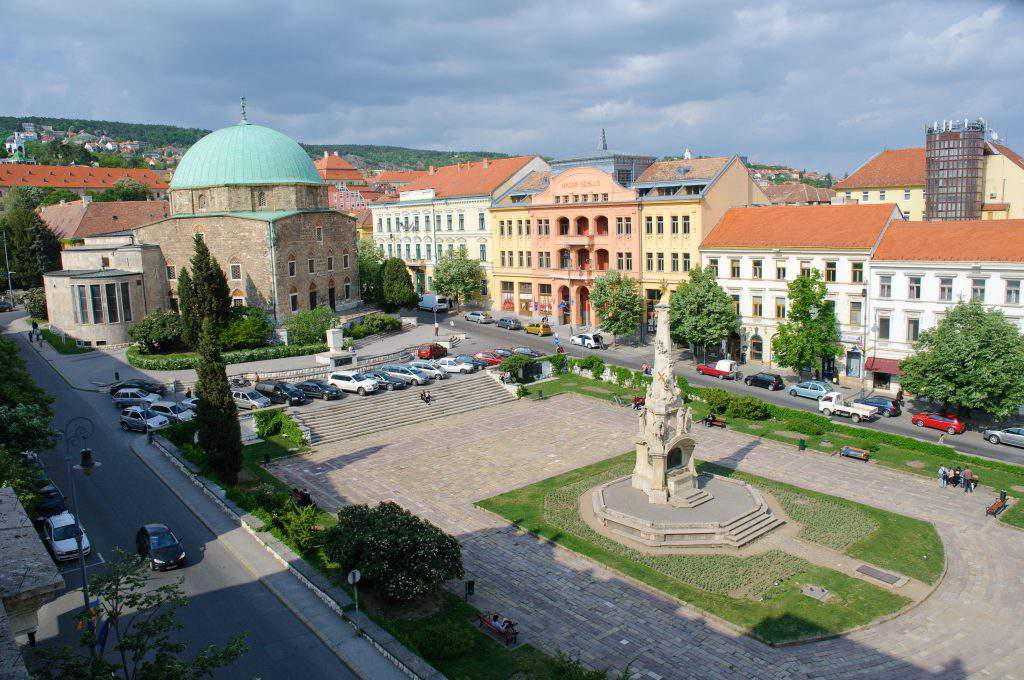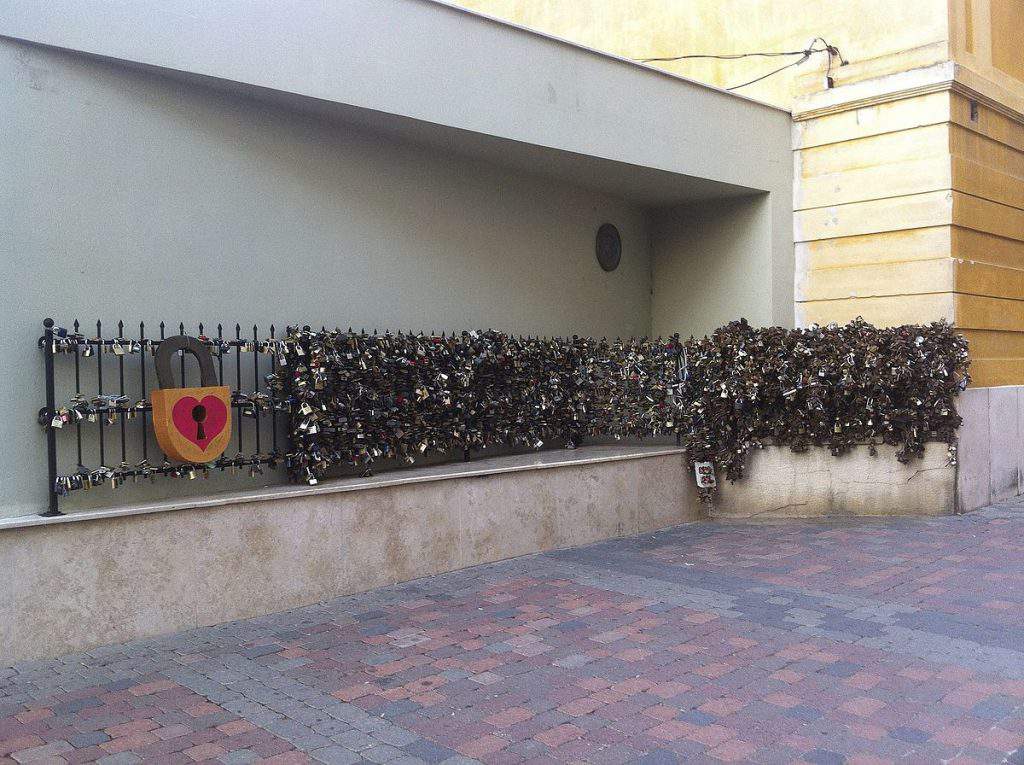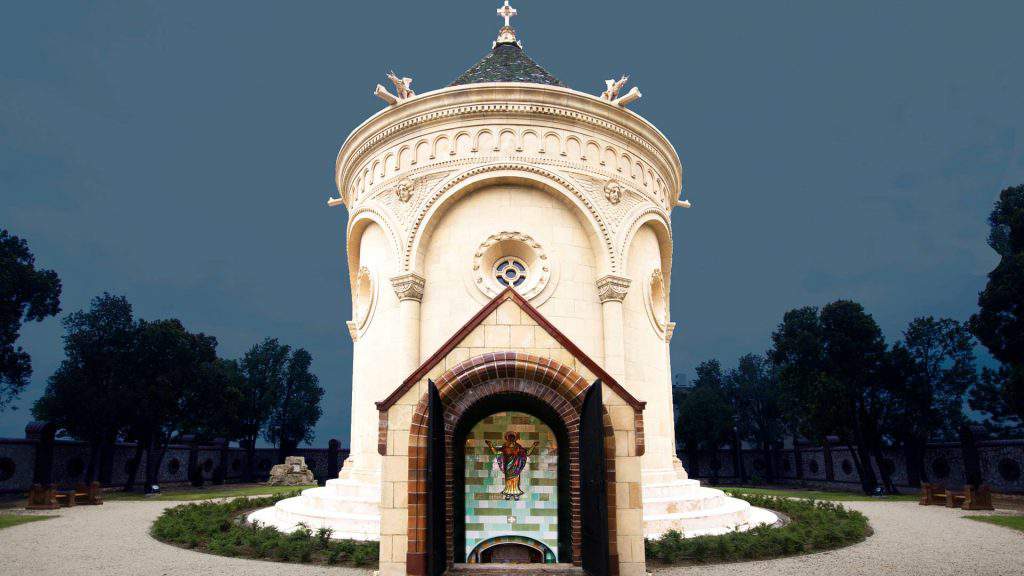Walking tour in the city of Pécs with amazing legends

Pécs, the fifth largest city of Hungary, is the perfect example of a city where history and culture coexist in peaceful harmony. It is a town that was founded in the Roman times and has been on the World Heritage List of UNESCO since 2000. Its lively and vibrant cultural life is thanks to a number of museums and historically important monuments located in the city. However, besides these, Pécs is the home of several legends related to its monuments and renowned people. Some of these stories are collected here.
1. The radiating Széchenyi Square
The Square is the city’s commercial, administrative and touristic centre. Once it was the marketplace of Pécs, where the city hall and the church also can be found. The history of the Square itself is very intriguing involving stories about how it was renamed several times (Fórum, City Piazza, Main Square), but there is also a legend about it being radioactive. According to Pecsma.hu, even tourists coming to Pécs have heard about the story that the square was constructed on radioactive ground, the remains of a former uranium mine.

It is also rumoured that in winter when the whole city is covered with snow, the Square is not affected by this problem due to the radioactive rays which immediately melt the snow.
However, the health-damaging effect of the ground has never been proved, so there is no cause for concern for taking a long walk in the centre admiring its monuments.
2. A wall full of locks honouring true love
It was in Pécs where the first locks of lovers appeared on a wall in the city centre. This wall is found in the Janus Pannonius Street connecting the Mosque of Pasha Quasim, the most famous Hungarian mosque, and the Cathedral of Pécs. There is much confusion about who the first people were who started what is now a tradition, that is to put locks on the wall.

One source mentions that it were wives in Pécs were the first who put the locks on the wall indicating to their lovers that the master of the house is not at home. Therefore, it was a kind of secret way of ensuring that no one would disturb them unexpectedly.

However, there is another possible explanation for the birth of this wall full of locks which is, by the way, the officially accepted version of the story. According to this, students graduating from high school in 1971 started this tradition by putting the locks of their school lockers onto the wall. This gave a basis for today’s popular trend to put a lock on the wall into which the true love of couples is closed.
If you believe that locks can ensure happiness, when you are in Pécs, do not forget to visit this street and find a place for your lock. Therefore, next time you can find it and recall great memories.
3. The Zsolnay Mausoleum and the secret of the winter solstice
Pecsma.hu reports that the Zsolnay Mausoleum is the city’s most mysterious sight. This is the burial site of the Zsolnay family where the secret of the eosin manufacturing can also be resolved. The story starts with Vilmos Zsolnay who was the greatest potter of his time thanks to his creativity that made the Zsolnay porcelain and pottery famous.

As the legend goes, at winter solstice when days start to become longer, the rays of the sun reach the tomb inside the Mausoleum, and the secret of the eosin manufacturing can be resolved. Therefore, what is unique in the Mausoleum is that its window was deliberately designed to allow the rays of the sun to penetrate the building illuminating the sarcophagus of Vilmos Zsolnay for a few minutes.

When Pecsma.hu asked an astronomer about this phenomenon perceivable on 21 December, he responded that it is around 11 a.m. that the perfect illumination of the Mausoleum can be expected.
4. The Lady who never left behind her bag
One of the most well-known inhabitants of the city of Pécs was Dr Endréné Bánki (born as Györgyi Fábián). This woman, known as the lady with a bag, still lives in the memory of locals since it was not a long time ago that she died. She was born in 1930 in Szekszárd and came from quite a well-to-do family in which her grandparents dealt with wine production while her parents were doctors.
His father was of Jewish origin, and in 1944, the whole family had to move into a small underground refuge on the property of a vintner in Szekszárd.
The underground haven was carefully covered, so no one noticed it. There was a secret hole allowing air to get into their shelter through which they also got food and water at night.
However, the time spent in such severe circumstances left a mark on the three of them. As Bama.hu reports, the parents had serious heart problems while Györgyi suffered from mental problems from that time on. After some time spent in a mental asylum, her condition improved a bit. When she got married to a police officer who spent terrible times in a concentration camp, she moved to Pécs. She was terrified that someone might want to kill or poison her, so every time she left her home, she took some food and clothes with herself.
This highly-educated woman studying law survived a lot that unfortunately affected her mind, but the nature of humanity created a legend around her figure that has become part of the everyday life of local citizens.
Featured image: facebook/Irány Pécs!
Source: pecsma.hu; wikipedia.hu; bama.hu





